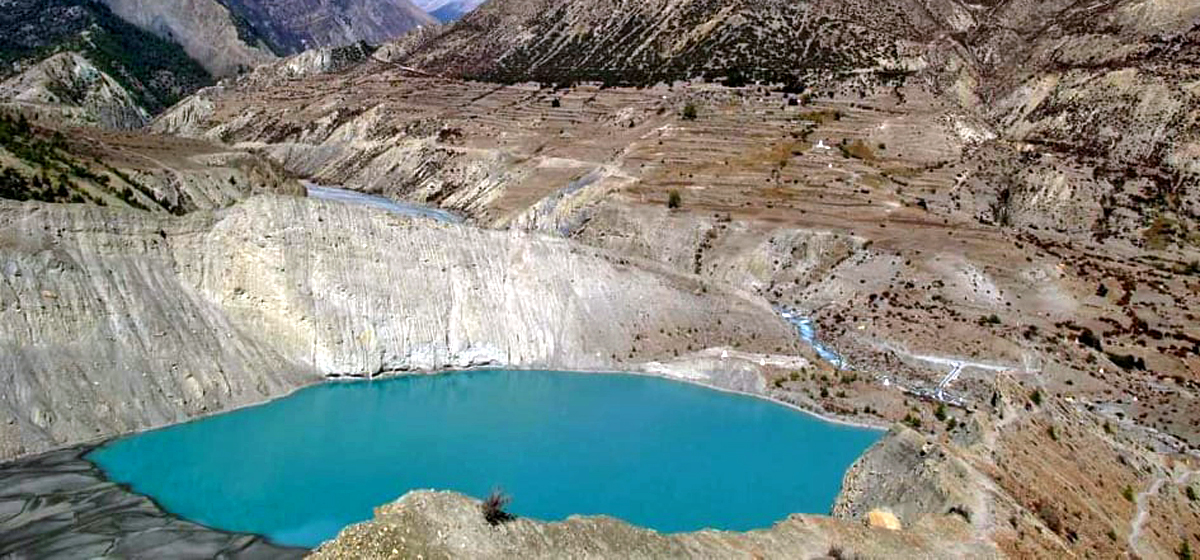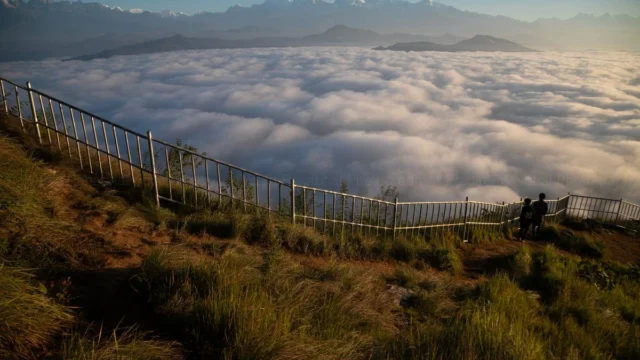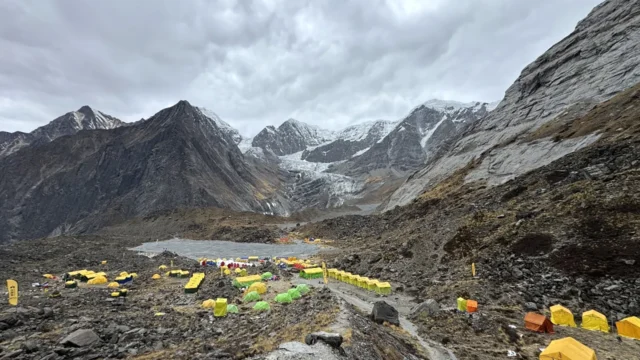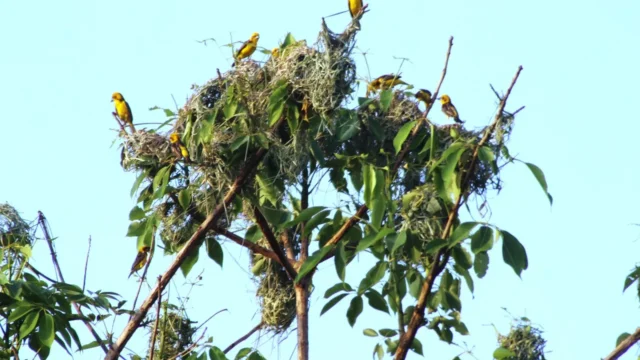The Gangapurna Glacial Lake, which is situated in the Manang district along the Annapurna Circuit trekking route, is gradually disappearing as a result of mud and debris buildup on one side and glacier retreat on the other. The lake’s ecological value and aesthetic appeal are greatly reduced as it gets shallower every year.
Gangapurna
This essential water source, located in Ngisyang Rural Municipality-6 at 3,540 meters above sea level, is supplied by a glacier from Gangapurna Mountain. Given the importance of glacial lakes to the planet’s water systems, the need to conserve the lake has grown. However, due to a lack of funding, efforts to protect the lake have stalled, endangering its future.
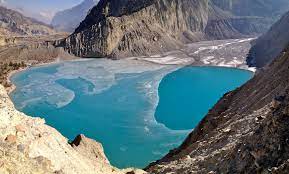
Gangapurna Glacier Lake has become a popular tourist destination after gaining more notoriety as the setting for the Bollywood film Unchai, which starred Amitabh Bachchan and Anupam Kher. The area has seen an increase in tourists since the pandemic, especially from India. A road now leads directly to the lake, which is only a 15-minute walk from Manang village. The lake freezes in the winter and is refilled by snowmelt during the monsoon.
Despite its importance, Gangapurna is one of 21 glacier lakes in Nepal that are at risk, according to a recent joint study conducted by the UNDP and the International Centre for Integrated Mountain Development (ICIMOD). Concern over the lake’s future is growing among local officials.
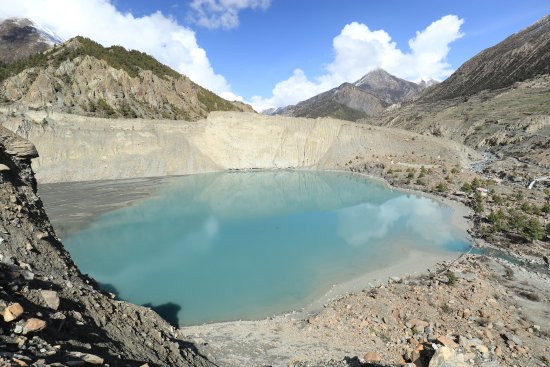
Ngisyang Rural Municipality Chairman Kancha Ghale voiced concern that unless quick conservation action is taken, the lake may disappear. Lack of funding has hampered a lake preservation project that was started three years ago with assistance from the Ministry of Culture, Tourism, and Civil Aviation. After the first year, no more money was released, despite the Ministry being expected to pay 70% of the budget and the rural municipality contributing 30%.
In the first year, some preparatory work was completed, but the construction company halted work because of a lack of funds. Consequently, only around 20% of the project has been finished. By raising the dam, constructing gabion walls to stop erosion, and developing infrastructure for tourism around the lake.
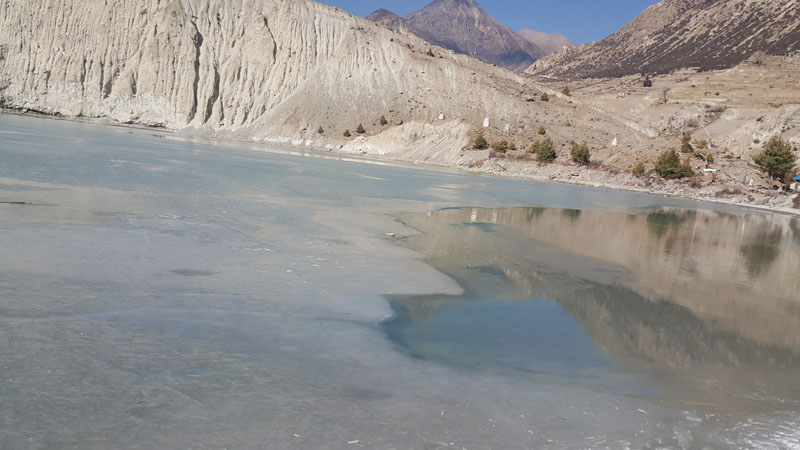
When flooding severely damaged the lake in 2021, locals decided to take matters into their own hands. To stop additional damage, community workers assisted in building a temporary dam. A construction company was given a contract for the required structures, but due to budgetary limitations, the project has stalled.
According to Chairman Ghale, the municipality may use its budget to finish necessary projects if the Ministry does not provide additional funding. The lake is an important source of water for the Marshyangdi River and other streams, and its preservation should be a top priority for the federal and provincial governments.
Experts caution that the area’s glaciers, which are vulnerable to floods and landslides, are seriously threatened by climate change. Catastrophic events could occur downstream if a glacial lake breaches. To keep an eye on these delicate areas, experts advise installing early warning systems and using satellite and radar technology. Gangapurna Glacier Lake’s survival depends on prompt action and adequate funding.
